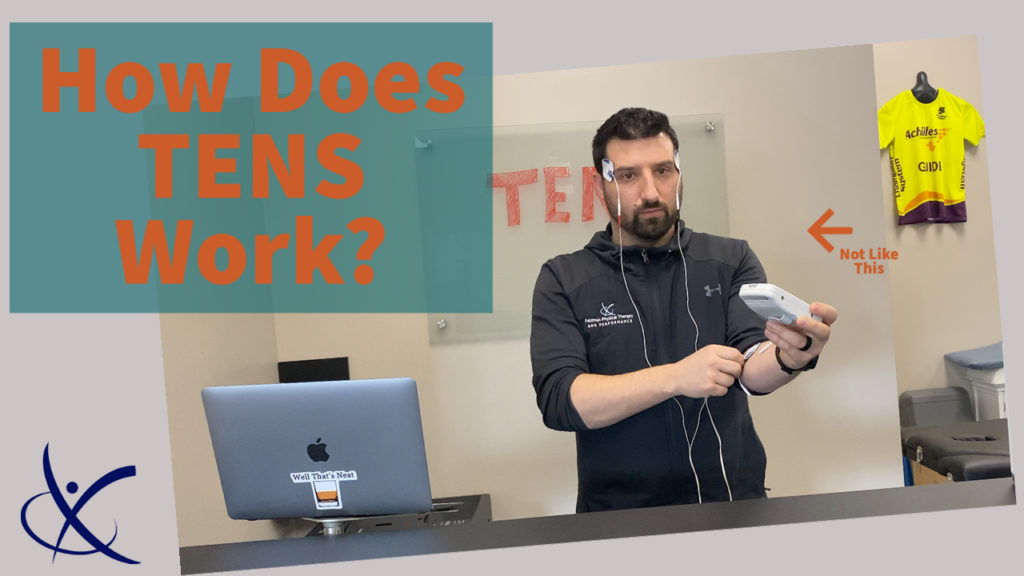What is a TENS unit and will it help me?
A TENS machine is a noninvasive approach commonly used to address pain and injuries. They are commonly prescribed and used across healthcare settings. I’d like to take some time to clear up a few misconceptions and then discuss some potential benefits.
Transcutaneous Electrical Nerve Stimulation (TENS)
Commonly, TENS units are “those pads with the tingly sensation” that people put on injuries. Yes, this is a traditional use of TENS or also referred to as simply “stim” or “e-stim.” These low-level electrical impulses can be felt as a light or strong “tingling” sensation. It is very common in physical therapy clinics and is typically used for every patient regardless of injury. If you’ve been to PT before, you’re probably familiar with TENS or stim.
From anecdotal experience polling my audience, I can say most people assume a benefit from TENS because they can “feel” something happening and it’s a fancy piece of equipment. Unfortunately, I have to divulge that not much is being accomplished from a long-term point of view. TENS happens to be a very temporary alteration to your nervous system that provides fleeting relief.
Put very simply, TENS units temporarily trick your nervous system into not feeling pain. They do this in the same way that you feel better when you rub your elbow after you hit your “funny bone.” Or when you rub your shin after you whack it on the coffee table. In addition to a creative string of expletives, you feel better because you’re exciting other sensory receptors that send a nerve impulse to your brain faster than the pain can travel. The nerves that carry “pain” signals transmit slower than the nerves that carry other sensory signals. Voila, pain loses that race up to the brain and we temporarily don’t “feel” the pain. Ain’t it magical!?
This is called the “gate theory” of pain where one gate closes (to pain) and another gate opens (to other sensory signals) to provide short-term “distraction” or relief from the pain. There have been some studies to show some lasting effects of 30+ minutes but on the whole, the lion’s share of research is inconclusive due to a lack of reliable high-quality studies or clinical trials. In fact, there is some evidence to show that people who use it frequently may even develop a tolerance for it and the pain relief won’t be as consistent.
What is the takeaway? Well, the main point I’d like to hit home is that TENS machines are purely for subjective pain relief and for addressing the nervous system. There is no effect on the physiology or injury so it won’t actually “help” heal an acute or chronic issue by itself. However, there are few contraindications to using it and when used safely (which is most of the time) it can be a low-risk option for pain relief for some people. Pain is public enemy #1 so it can be a useful tool when used appropriately and so long as we are not using it in lieu of a more beneficial treatment option.
In the clinic, I can use it mostly for people with post-operative pain and mobility restrictions. It can help provide pain relief during joint mobility and allow the clients to tolerate movements that would otherwise be painful. But I have to be honest, the only reason I have the machine is that it was given to me for free by a company rep and they’ve since gone out of business. We generally try and steer clients away from passive approaches to their healthcare and instead choose more active means of enacting change, especially if the choices are temporary vs lasting results.
TENS machines are by no means the devil, but they certainly aren’t the magical end all that they are often touted to be. Be sure to ask questions, but don’t shoot the messenger.
Cheers!
